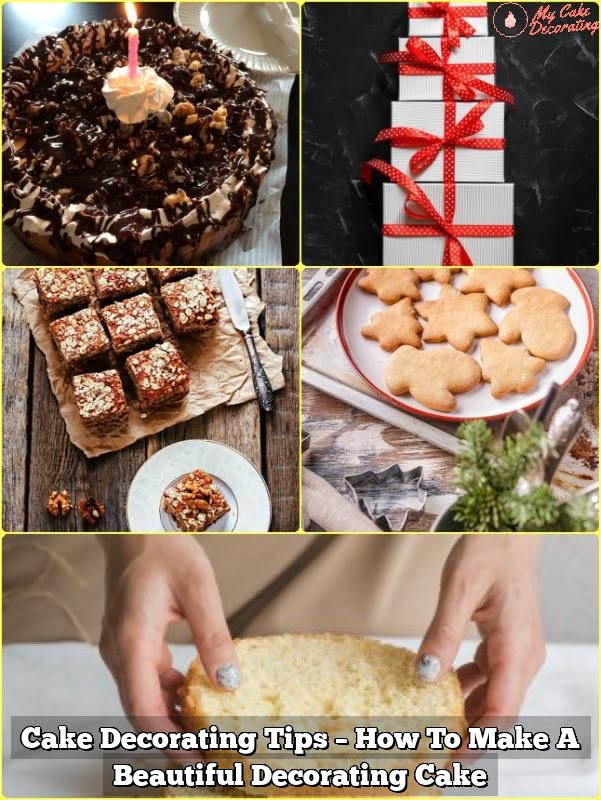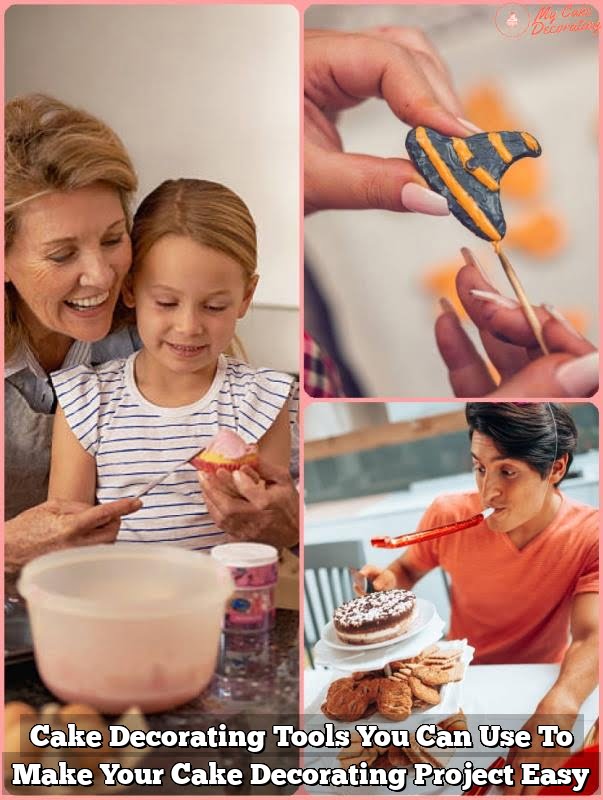Are you looking to add a personal touch to your cake decorating? In this article, we will show you how to make your own cake decorating tips, allowing you to unleash your creativity and customize your designs. Cake decorating tips are essential tools for creating beautiful and intricate designs on cakes, and making your own tips gives you the freedom to experiment with unique shapes and patterns.
Cake decorating is not just about adding frosting to a cake; it’s a form of art that allows you to express your creativity and imagination. By making your own cake decorating tips, you can elevate your baking skills and take your creations to the next level. The process of crafting your own tips also adds a unique and personal touch to your cakes, making them stand out from store-bought or pre-made designs.
In the following sections, we will cover everything you need to know about making your own cake decorating tips, including the basics of different types of tips, the materials needed, step-by-step tutorials, safety precautions, testing and troubleshooting, as well as the benefits of creating your own custom tips. Get ready to dive into the world of homemade cake decorating and unleash your artistic potential.
The Basics of Cake Decorating Tips
Cake decorating tips come in a variety of types, each with its own specific size and purpose. Understanding the differences between these tips is essential for achieving the desired decorations on your cakes. Whether you are looking to create delicate flowers or intricate designs, choosing the right tip is crucial for successful cake decorating.
Different Types of Tips
There are several types of cake decorating tips, including round tips, star tips, petal tips, leaf tips, and specialty tips. Round tips are versatile and can be used for outlining, writing, or creating simple borders. Star tips are ideal for producing rosettes, stars, and shells. Petal tips aid in forming realistic flower petals, while leaf tips help in crafting lifelike leaves. Specialty tips such as ruffle and basketweave tips add unique textures and designs to cakes.
Sizes and Uses
Cake decorating tips also come in various sizes, with smaller numbers indicating larger openings. Larger round and star tips are suitable for filling cupcakes or covering large areas with frosting. Smaller round and star tips are perfect for detailed work or creating intricate patterns. When it comes to petal and leaf tips, the size will determine the scale of the flower or leaf being crafted.
Understanding the basics of cake decorating tips is essential for anyone interested in creating their own. By knowing the different types available, their sizes, and their specific uses, you can confidently experiment with making your own cake decorating tools to suit your unique styles and preferences. Whether it’s a custom tip design or an unconventional shape not commercially available, making your own cake decorating tip opens up endless possibilities for creative expression.
Materials Needed
Making your own cake decorating tips can be a fun and creative way to personalize your baking experience. To get started, you will need to gather a few key materials to make your own cake decorating tips. These materials are essential for shaping and creating different tip designs, ensuring that you have the right tools for the job.
Metal Piping
One of the most important materials needed for making your own cake decorating tips is metal piping. This can be found at most hardware or home improvement stores and comes in different thicknesses, allowing you to create various tip sizes and shapes. Ensure that the metal piping is food-safe and suitable for use in decorating edible treats.
Pliers
In addition to metal piping, you will also need a pair of pliers to help shape the metal into the desired tip design. Pliers with a fine tip are especially useful for creating intricate details and patterns, giving you more control over the shaping process.
Safety Gloves
When working with metal piping, it’s important to prioritize safety. Investing in a pair of safety gloves will protect your hands from sharp edges or potential injuries during the shaping process. Choose gloves that allow for dexterity while providing adequate protection.
Remember that these materials are just the starting point for making your own cake decorating tips – creativity and patience are also essential ingredients. Now that you have gathered the necessary materials, it’s time to move on to the next step in creating your unique cake decorating tips.
Step-by-Step Guide
Making your own cake decorating tips can be a fun and rewarding DIY project for any baking enthusiast. With just a few simple materials and some creativity, you can create custom tips that are perfect for your unique cake decorating needs. In this step-by-step guide, we will walk you through the process of making your own cake decorating tips, from shaping the metal to creating different tip designs.
To make your own cake decorating tips, you will need a few essential materials including metal piping, pliers, safety gloves, and a file for smoothing rough edges. Begin by cutting a piece of metal piping to your desired length using the pliers or a pipe cutter.
Next, use the pliers to shape one end of the metal piping into a cone or star shape, depending on the design of tip you want to create. Be sure to wear safety gloves during this process to protect your hands from sharp edges.
Once you have shaped the metal piping into the desired tip design, use a file to smooth any rough or sharp edges. This will ensure that your homemade cake decorating tip is safe to use and won’t damage your pastry bags or piping equipment. Finally, test out your new tip by attaching it to a pastry bag and practicing different decorating techniques on a piece of parchment paper.
If necessary, make any adjustments or troubleshoot any issues that may arise during the testing process. With some practice and patience, you’ll be able to create custom cake decorating tips that are perfect for all of your baking projects.
| Materials Needed | Additional Information |
|---|---|
| Metal Piping | Can be found at most hardware stores |
| Pliers | Used for shaping the metal piping |
| Safety Gloves | Protects hands from sharp edges while working with metal |
| File | For smoothing rough edges on the homemade cake decorating tip |
Safety Precautions
When working with metal piping to make your own cake decorating tips, it is crucial to prioritize safety. Handling metal and shaping it into intricate designs can pose some risks, so taking proper precautions is essential. Here are some important safety measures to keep in mind:
- Wear safety gloves: When working with metal piping, it’s important to protect your hands from sharp edges and potential cuts. Invest in a pair of sturdy safety gloves that fit well to provide the necessary protection while shaping the metal.
- Use pliers with caution: Pliers are a crucial tool for shaping and bending the metal piping into different tip designs. However, it’s important to use them with caution to avoid any accidents. Always hold the piping securely with one hand while using the pliers with the other hand to prevent slipping or sudden movements.
- Work in a well-ventilated area: If you’re cutting or shaping metal piping, there may be some metal filings or dust particles produced. To avoid inhaling these particles, work in a well-ventilated area or consider wearing a face mask for added protection.
By following these safety precautions, you can ensure a safer and more enjoyable experience when making your own cake decorating tips.
In addition to taking specific safety measures, it’s also important to stay mindful of general safety practices when working with tools and materials. Always handle sharp objects such as metal piping carefully, and be aware of your surroundings to avoid accidental injuries. Remember that even though you’re getting creative by making your own cake decorating tips, safety should always come first.
Testing and Troubleshooting
After creating your own cake decorating tips, it is important to test them to ensure they produce the desired results. Here is a step-by-step guide on how to test your homemade cake decorating tips:
1. Check for Leaks: Before using the tip with icing, make sure there are no leaks or holes in the metal that could cause the icing to come out unevenly. You can do this by filling a piping bag with water and testing the tip on a piece of parchment paper. If there are any leaks, use pliers to securely close up the holes.
2. Test Different Designs: Once you have confirmed that there are no leaks, fill a piping bag with icing and practice creating different designs on a flat surface. This will allow you to see how the icing flows through the homemade tip and if it creates the shapes and patterns you desire.
3. Assess Consistency: Pay attention to the consistency of your icing as well, as this can also impact the results. If the icing is too thin or too thick, it may not work well with your homemade tip. Make adjustments as needed until you achieve the right consistency.
Troubleshooting Your Homemade Cake Decorating Tips
While testing your homemade cake decorating tips, you may encounter some issues that need troubleshooting:
– If the icing comes out too fast or too slow, adjust the pressure on the piping bag or check for any clogs in the tip.
– If the designs are not coming out as expected, practice different angles and techniques until you find what works best with your homemade tip.
– In case of any sharp edges on your homemade tip, use sandpaper or a file to smooth them out to avoid scratching or damaging your baked goods.
By testing and troubleshooting your homemade cake decorating tips, you can ensure that they work effectively and create beautiful designs on your cakes and baked treats.
Remember, safety should always be a priority when working with metal piping tools during this process.
Benefits of Making Your Own Tips
The benefits of making your own cake decorating tips are numerous, and they go beyond just the satisfaction of creating something unique. One of the main advantages is the cost-saving aspect. Purchasing a set of professional cake decorating tips can be quite expensive, especially for beginners or hobbyists. By making your own tips, you can save a significant amount of money while still achieving professional-looking results.
Another advantage of making your own cake decorating tips is the customization options it offers. When you make your own tips, you have complete control over the size and shape of the tip, allowing you to create designs that may not be available in commercial sets. This level of customization opens up a world of creative possibilities and allows you to experiment with different patterns and textures on your cakes and other baked goods.
In addition to cost-saving and customization options, making your own cake decorating tips also gives you the opportunity to repurpose materials that would otherwise go to waste. Whether it’s using metal piping from old kitchen tools or repurposing household items into unique tip shapes, creating your own tips allows for a sustainable approach to cake decorating. With a bit of creativity and resourcefulness, you can transform everyday objects into functional and innovative cake decorating tools.
| Advantages | Description |
|---|---|
| Cost-Saving | Making your own tips can save money compared to purchasing professional sets. |
| Customization Options | You have complete control over the size and shape, allowing for unique designs. |
| Sustainability | You can repurpose materials and be more environmentally friendly. |
Conclusion
In conclusion, making your own cake decorating tips can be a fun and rewarding experience for any baker. Not only does it allow for creativity and customization, but it also provides cost-saving benefits. By following the step-by-step guide provided in this article, you have the opportunity to create unique and personalized cake decorating tips that can elevate your baking skills to new heights.
The process of making your own cake decorating tips may seem daunting at first, but with the right materials and safety precautions in place, it can be a fulfilling DIY project. From shaping the metal piping to testing and troubleshooting the homemade tips, every step offers an opportunity to learn and experiment with different designs. By sharing your creations online, you can inspire others to get creative and try their hand at making their own cake decorating tips.
So, don’t be afraid to take on the challenge of creating your own cake decorating tips. Whether you are a seasoned baker or just starting out, this DIY project is a great way to showcase your skills and add a personal touch to your baked goods. Get creative, have fun, and share your homemade cake decorating tips with the baking community – you never know who you might inspire along the way.
Frequently Asked Questions
What Can I Use if I Don’t Have a Piping Tip?
If you don’t have a piping tip, you can use a simple plastic sandwich bag or a Ziploc bag as an alternative. Just snip off a small corner of the bag to create a makeshift tip.
How Do You Make Piping Tips With Ziploc Bags?
Making piping tips with Ziploc bags is an easy and cost-effective solution. Simply fill the bag with frosting, seal it, and then cut a tiny piece off one of the corners. This will create a makeshift piping tip that you can use for decorating cakes and pastries.
How Do You Make a Star Piping Tip?
To make a star piping tip, you can use a large open-star pastry tip if you have one. If not, you can easily create a star shape by cutting a slit in one side of your piping bag and folding the edges to form triangular points.
This will help you achieve the same effect as using a traditional star-shaped piping tip.

Welcome to my blog about home and family. This blog is a place where I will share my thoughts, ideas, and experiences related to these important topics. I am a stay-at-home mom with two young children. I hope you enjoy reading it! and may find some helpful tips and ideas that will make your home and family life even better!





